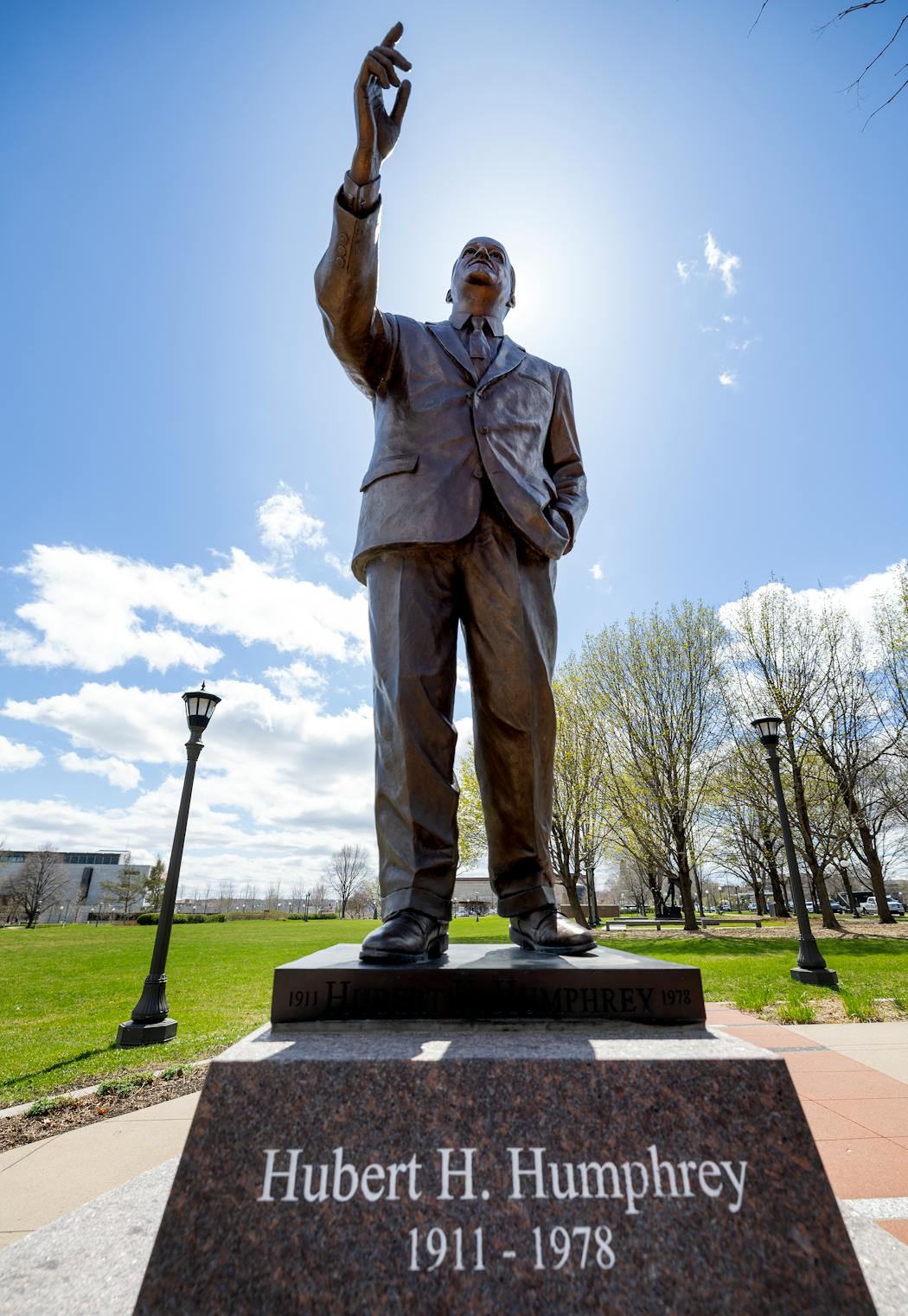Hubert H. Humphrey could be going back to Washington — as a statue.
State legislators have proposed spending $300,000 to make a statue of the late Minnesota politician — who pushed the Democratic Party to embrace desegregation, helped pass the Civil Rights Act and served as Lyndon B. Johnson's vice president — and ship it to the U.S. Capitol, where each state has statues of two prominent figures.
The Humphrey statue would replace one of Henry Mower Rice, who worked for Minnesota statehood and was one of the state's first two senators.
House Majority Leader Jamie Long, DFL-Minneapolis, the bill's sponsor, said he thinks Humphrey has surpassed Rice in significance.
"The state hadn't been around for very long," when the statue of Rice was installed in 1916, Long said. "We've had quite a lot of state history that has taken place since then."
Some states, including Connecticut, Rhode Island and New York, have had the same statues since the 1870s, according to the Architect of the Capitol. Others have swapped out their statues over the years as new figures become prominent. Most recently, Nebraska replaced a former agriculture secretary with author Willa Cather.
Rice stands with a statue of Maria Sanford, a University of Minnesota professor who was one of the first American women to become a professor. Sanford's statue was installed in 1958.
He considered other Minnesotans, but Long said he kept coming back to Humphrey.
"It's indisputable that Hubert Humphrey is the Minnesotan who has had the greatest impact on national politics," Long said. "He really had no peer in terms of the work he did on the national stage, on behalf of our state."
More than the high office he achieved, Long said it was Humphrey's role in the civil rights movement that made Long think he is worthy of a statue in the Capitol.
Long said he had not been familiar with Rice, and said it was only after he proposed swapping the statues that he learned Rice had been involved in relocating Indigenous people.
Rice helped orchestrate the relocation of the Mille Lacs Ojibwe to the White Earth reservation, according to the Minnesota Historical Society, and the Ho-Chunk to Long Prairie.
If the Legislature approves the measure, part of a larger state and local government policy bill, Minnesota would send a resolution to Congress to say it wants to change out the statue.
The statue would then be cast — from the same mold used to make the statue of Humphrey on the Minnesota Capitol grounds, Long said — and shipped to Washington, D.C. The money will also cover shipping Rice's statue back to the Minnesota Historical Society, though it's not yet clear if or where Rice's statue might be displayed.
Arizona judge rejects GOP wording for voters' abortion ballot initiative pamphlet
FBI says Trump was indeed struck by bullet during assassination attempt




